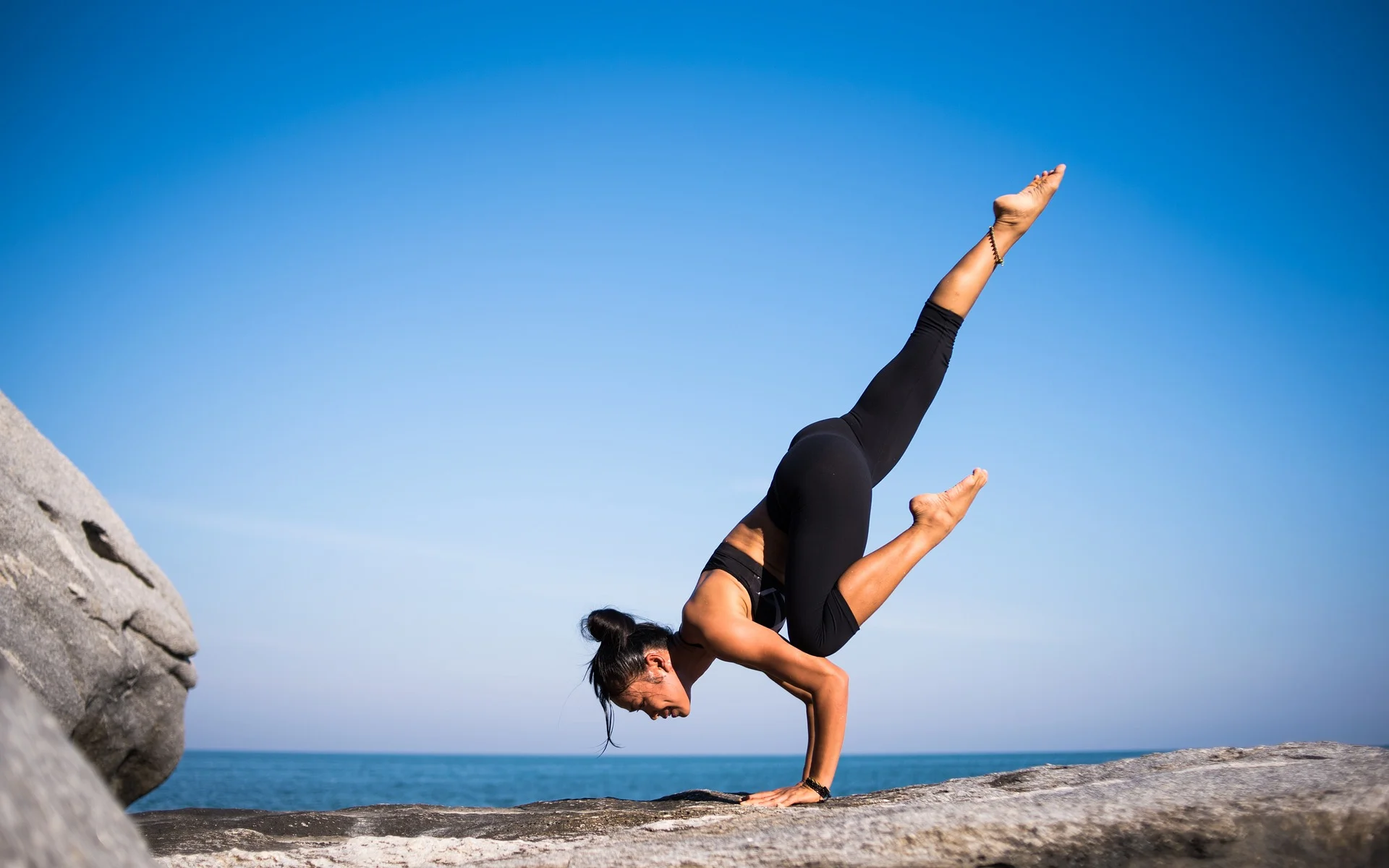It’s very popular to discuss the importance of finding a good work/life balance, but we don’t tend to talk enough about the importance of our physical balance. Our balance is an integral part of our overall fitness and lifelong health (including mobility), yet it’s rarely factored in with the more hardcore fitness targets such as heart rate, pounds lifted, or kilometres run.
Our balance and stability have a lot to do with our core, which is the powerhouse of our bodies. Having a strong core lets us control how we position our bodies, as well as keep an upright position. This means that we need to regularly work on building strength in our back, stomach and chest area to improve our posture and stability, as this is our balance centre.
The benefits of good balance
Although many of us refer to ourselves as clumsy or chalk it up to simply being “accident-prone” when we have slips, sprains and other mishaps, much of it is indeed related to our balance – or the lack of it. When we have good balance and stability, we engage our core and other muscles to come to the rescue to help ward off that potential disaster. Other benefits of improving our balance include:
- Stabilized joints – this includes those pesky ones that suffer so many injuries, such as our knees, hips, ankles and shoulders
- Improved reaction time and coordination –e., the nanoseconds before a fall where we can regain our control and stabilize ourselves (like Ninja moves without actually being a Ninja)
- Enhanced agility and mobility – with more control of our bodies and our positioning, we can move around with increased stealth and poise
- Improved long-term health – falls and their associated injuries can reduce the quality of life for many people
When we’re thrown off balance
Working on our balance or stability is key for preventing falls and accidents. According to Stats Canada research, falls are the most common cause of injury among older Canadians. Each year, an estimated 1 in 3 people aged 65 and older is likely to fall at least once. These falls can often result in severe injuries, as well as long hospital stays, depression, isolation and even death. That’s why we need to make stability exercises a regular part of our day, not just to be stronger and more mobile, but so that we can be ready for when we are literally thrown off balance.
Interestingly, balance exercises used to be a standard part of the curriculum in our school systems, but much of the equipment that kids used which really developed balance and coordination (trampolines, box-horses, balance beams, etc.) have unfortunately been disposed of due to liability issues. Although we certainly don’t want anyone having injuries, we do need to challenge ourselves to improve our balance; it’s one of those things that if we don’t use it, we lose it.
Regaining our balance
Although balance does require a fair amount of mental focus, the exercises to develop it range from being super easy to downright challenging; it all depends on the individual. Last summer I set up a home-made slack line between two trees in our yard and practiced walking across it to improve my balance. It’s difficult at first, but it is amazing how our minds and muscles learn; in fact, I got pretty good at it. Unfortunately, the ratchet straps I used were not the highest quality and one of them ended up breaking – recoiling the metal hook into my heel. Ouch! Don’t worry, I recovered, and I’m back at it with new and improved ratchets (they also sell full “slack line” sets at most outdoor stores).
Another activity that I’m really fond of for balance (and an all-around full-body workout) is stand-up paddle boarding. This can be a relaxing and beneficial activity for developing core strength. I like to rent stand-up paddle boards when I’m on the ocean; surfing waves with the boards is a ton of fun and I’ve found it to be so much easier than traditional surfing because the paddle allows me to accelerate the board a lot faster in front of the waves and I also use the paddle for balance as I’m surfing.
A balanced approach
The activities to improve balance are endless, and due to their nature of combining concentration with strength, they tend to be very calming and great for meditating. Yoga and tai chi are excellent to improve balance and stability in addition to improving overall strength, flexibility and mental focus. We can also do fun and easy activities for our balance that fit into our everyday routines, such as standing on one foot while doing the dishes, using a fitness ball instead of a traditional chair, or standing on our tiptoes while chatting on the phone. There are also great ways to specifically strengthen our core, such as sit-ups, bridge exercises, planks, and skipping. We may not see the efforts of our good balance, but we definitely feel them every time we (almost) slip on an icy patch or quickly side-step an object on the floor. Our good balance is our secret defender against many accidents, injuries and poor posture. Keep up the good work!
Remember, the storm is a good opportunity for the pine and the cypress to show their strength and their stability. – Ho Chi Minh
